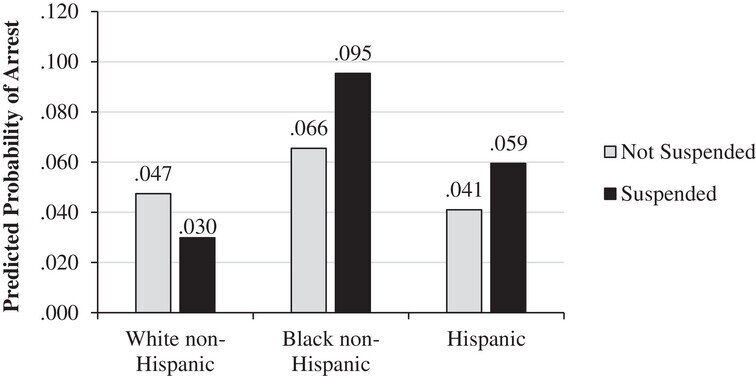The Case Against School Suspensions: Supporting Students Through Positive Discipline

Table of Contents
The Ineffectiveness of School Suspensions
School suspensions, a common disciplinary approach in many schools, often fail to address the root causes of student misbehavior and, in fact, can exacerbate existing problems.
Increased behavioral problems: Suspensions often worsen student behavior, not improve it.
- Increased likelihood of dropping out: Studies consistently show a strong correlation between school suspensions and increased dropout rates. Suspended students are more likely to fall behind academically and disengage from school altogether.
- Involvement in criminal activity: Removing students from the structured environment of school can increase their risk of involvement in criminal activity and gang affiliation. The lack of supervision and positive mentorship contributes to this dangerous trend.
- Mental health issues: Suspension can significantly impact a student's mental health, leading to increased anxiety, depression, and feelings of isolation and alienation. This can have long-term consequences for their well-being.
The cycle of suspension is often self-perpetuating. A student is suspended for misbehavior, misses valuable instruction, falls behind academically, becomes further frustrated and disengaged, and is more likely to misbehave again, leading to further suspensions. This cycle negatively impacts academic performance and social-emotional development, hindering the student's overall success.
Disproportionate impact on marginalized students: School suspensions disproportionately affect students of color and students with disabilities.
- Racial disparities: Data consistently reveals that students of color are suspended at significantly higher rates than their white peers, even when controlling for factors like socioeconomic status and prior academic performance.
- Disability disproportionality: Students with disabilities are also disproportionately suspended, often due to a lack of understanding and support for their individual needs.
- Implicit bias: Implicit bias among school staff plays a significant role in these disparities. Unconscious biases can lead to harsher disciplinary actions against students from marginalized groups.
This disparity reflects systemic inequalities within the education system. Addressing the root causes of these disparities, such as implicit bias training for staff and culturally responsive discipline practices, is crucial for creating a more equitable and just school environment. The long-term consequences of disproportionate suspensions include increased rates of incarceration, reduced educational attainment, and diminished life opportunities for affected students.
The Benefits of Positive Discipline Strategies
Positive discipline offers a powerful alternative to school suspensions, focusing on teaching students self-regulation, problem-solving, and conflict resolution skills.
Fostering a positive school climate: Positive discipline creates a safer, more supportive learning environment for all students.
- Improved student-teacher relationships: When teachers and students work collaboratively to resolve conflicts and build positive relationships, a climate of trust and respect emerges.
- Increased student engagement: A positive school climate fosters a sense of belonging and purpose, leading to increased student engagement and participation in learning.
- Reduced bullying and violence: By addressing the underlying causes of conflict and promoting empathy and understanding, positive discipline reduces bullying and violence.
Restorative justice practices and conflict resolution strategies are essential components of positive discipline. These approaches focus on repairing harm, restoring relationships, and promoting accountability, rather than simply punishing misbehavior.
Teaching self-regulation and problem-solving skills: Positive discipline helps students develop essential life skills.
- Improved emotional regulation: Positive discipline techniques empower students to understand and manage their emotions effectively.
- Conflict resolution skills: Students learn to communicate their needs assertively, listen to others' perspectives, and find mutually acceptable solutions to conflicts.
- Empathy and responsible decision-making: Through collaborative problem-solving and restorative practices, students develop empathy and the ability to make responsible decisions.
Specific positive discipline techniques include collaborative problem-solving, logical consequences (that are related to the misbehavior and teach a lesson), and restorative circles, where students participate in repairing harm caused by their actions.
Building strong relationships between students and staff: Positive discipline emphasizes building trusting relationships.
- Increased communication and collaboration: Open communication and collaboration between students and staff are paramount in a positive discipline approach. This fosters mutual respect and understanding.
- Improved student attendance and engagement: When students feel supported and valued, their attendance and engagement in school improve dramatically.
A supportive school environment, where students feel safe, respected, and connected, improves student outcomes and reduces the need for punitive measures like suspensions. This proactive approach to discipline fosters a sense of community and belonging, leading to a more positive and productive learning environment for everyone.
Rethinking School Discipline: Embracing Positive Approaches
In conclusion, school suspensions are an ineffective and often harmful disciplinary tool that disproportionately affects marginalized students. They fail to address the root causes of misbehavior and can exacerbate existing problems, leading to a cycle of suspension and negative consequences. In contrast, positive discipline strategies offer a powerful alternative, fostering a positive school climate, teaching essential life skills, and building strong relationships between students and staff. Alternatives to suspension, such as restorative justice and collaborative problem-solving, are key components of creating effective discipline. Let's work together to replace school suspensions with positive discipline methods that support all students and create thriving school communities. Learn more about implementing positive discipline strategies in your school today!

Featured Posts
-
 Carrie Actress And Amy Irvings Mother Priscilla Pointer Dead At 100
May 02, 2025
Carrie Actress And Amy Irvings Mother Priscilla Pointer Dead At 100
May 02, 2025 -
 300 5
May 02, 2025
300 5
May 02, 2025 -
 Earn 1 500 Ponants Agent Incentive For Paul Gauguin Cruise Bookings
May 02, 2025
Earn 1 500 Ponants Agent Incentive For Paul Gauguin Cruise Bookings
May 02, 2025 -
 Stroomstoring Breda Oorzaak En Herstel Van Uitgebreide Onderbreking
May 02, 2025
Stroomstoring Breda Oorzaak En Herstel Van Uitgebreide Onderbreking
May 02, 2025 -
 Pm Modi Flags Off First Train In Kashmir Ending Decades Of Isolation
May 02, 2025
Pm Modi Flags Off First Train In Kashmir Ending Decades Of Isolation
May 02, 2025
